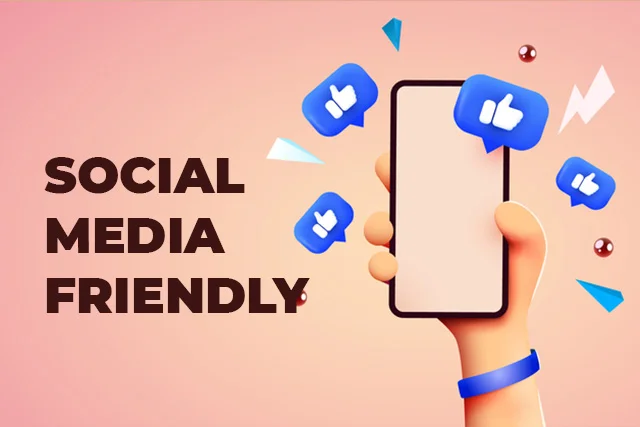In the digital age, content creation has become a pivotal aspect of online engagement, marketing, and communication. Among the myriad forms of content, blogs and vlogs have emerged as two of the most popular and effective mediums. However, many people often get confused about the difference between a blog & vlog, their unique characteristics, and how they can be utilized effectively.
Table of Contents
A blog is a type of content that primarily focuses on written articles. These articles, or “posts,” are usually published on a website and can cover a vast range of topics. Blogs are often used for sharing information, personal experiences, news, opinions, and more. They can be text-based, but may also include images, videos, infographics, and other multimedia elements to enhance the reader’s experience.

A blog is a type of content that primarily focuses on written articles. These articles, or “posts,” are usually published on a website and can cover a vast range of topics. Blogs are often used for sharing information, personal experiences, news, opinions, and more. They can be text-based, but may also include images, videos, infographics, and other multimedia elements to enhance the reader’s experience.
The primary medium is text, often accompanied by images or videos.
Blogs are usually detailed and informative, providing in-depth analysis or commentary on a specific topic.
Blogs are optimized for search engines with keywords, meta descriptions, and other SEO practices to increase visibility. If you’re looking to improve your blog’s visibility, consulting an SEO company can be very beneficial.
Readers can often leave comments and interact with the author and other readers.
A vlog, short for “video blog,” is a type of content that focuses on video. Vlogs are typically published on video-sharing platforms like YouTube, and Vimeo, or directly on social media platforms. They are a dynamic and engaging way to share information, personal experiences, tutorials, and more.
The primary medium is video, which can include visual and auditory elements.

Vlogs are often more personal and engaging, featuring the creator speaking directly to the audience.
The visual nature of vlogs makes them more appealing for demonstrating products, tutorials, and travel experiences.
Vlogs are easily shared on social media platforms, increasing their potential reach and engagement.

Understanding the difference between blog & vlog is crucial for content creators and marketers. Here are some key distinctions:
Both blogs and vlogs have their unique advantages and can be used effectively depending on the goals of the content creator or marketer. Here’s a look at the blog and vlog difference in terms of usage:
Understanding the difference between blog and vlog also involves weighing their pros and cons.
Deciding whether to create a blog or a vlog depends on several factors:

Consider the nature of your content. If it’s detailed and requires an in-depth explanation, a blog might be better. If it’s visual, like a tutorial or product review, a vlog might be more suitable.
Understand your audience’s preferences. Do they prefer reading detailed articles, or do they engage more with video content?
Evaluate your resources and skills. Do you have the equipment and expertise for video production, or are you more comfortable with writing?
If SEO and long-term discoverability are crucial for your content, blogging might offer more advantages. For immediate engagement and shareability, vlogging could be the way to go.
For maximum impact, consider combining both blogs and vlogs in your content strategy. This approach allows you to leverage the strengths of each medium and cater to a broader audience. For example, you can create a detailed blog post and accompany it with a vlog that summarizes the key points or provides a visual demonstration. This not only enhances user experience but also improves your content’s SEO and social media reach. Collaborating with a content marketing agency can help you craft a cohesive strategy that integrates both blogs and vlogs effectively.
To create a successful blog, focus on the following elements:
Provide valuable, well-researched, and original content that addresses the needs and interests of your audience.
Incorporate images, infographics, and videos to break up text and keep readers engaged.
Use keywords strategically, optimize meta descriptions, and include internal and external links to improve search engine rankings.
Encourage readers to leave comments, share your posts, and interact with your content.
For vlogging success, consider the following tips:
TechCrunch: A leading technology blog that covers startups, gadgets, and Silicon Valley news. TechCrunch provides in-depth articles and analysis, attracting millions of readers.
Sprout Social: A blog focused on social media marketing, offering valuable insights, tips, and strategies for businesses. Its high-quality content helps businesses improve their social media presence. Partnering with a social media marketing agency can help you achieve similar success.
Casey Neistat: A well-known vlogger who shares his daily life, travel adventures, and creative projects. Casey’s engaging storytelling and high-quality production have earned him millions of subscribers.
Tasty: BuzzFeed’s cooking channel that features quick and easy recipes. Tasty’s visually appealing videos and easy-to-follow instructions make it a favourite among food enthusiasts.
In the world of digital content creation, understanding the difference between blog & vlog is essential for having their unique strengths. Blogs and vlogs serve different purposes and provide different audience preferences. By recognizing the blogs and vlogs difference content creators and marketers can make informed decisions on which medium to use, or how to effectively combine both to maximize reach and engagement.
Nirbhay Chauhan is a Performance Marketing and ROI Specialist with expertise in SEO, PPC, and media planning. With a passion for data-driven strategies, Nirbhay helps businesses scale by optimizing their marketing efforts to deliver measurable results. His extensive experience in driving online growth and maximizing ROI makes him a trusted partner for businesses looking to elevate their digital presence.